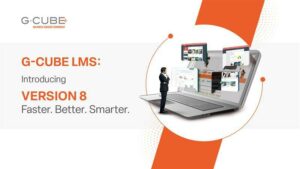Expanding markets, global operations and workforce mobility have forced corporate and educational enterprises to find newer and more effective ways to manage the growing need for enterprise-wide training and learning solutions.
With e-Learning offering viable alternatives to traditional training methods, learning has been revolutionized with high content quality and cost-effective methods of addressing training needs, the world over.
It is especially useful for organizations that operate from multiple offices and require a training solution that connects people at all locations, at any time and provides a standardized set of instructions and e-Learning to foster ‘enterprise transformation’ and enhance ROI. This could mean helping executives in gaining new competencies, launching new products or services or enhancing skill sets. The additional revenue generated or the return on investment (ROI) is used as the metric to measure the success of e-Learning in such organizations.
These involve:
Web-based performance support systems to help employees evaluate their performance, identify their strengths and weaknesses and train accordingly Simulation of actual environment for hands-on practice in products and processes. Online training for organizations in the field of education and quality enhancement.
e-Learning applications and processes include:
Web-based learning, Computer-based learning, Virtual classrooms and digital collaborations, where content gets delivered through the internet, intranet or extranet,
Audio or videotape or CD-based learning materials Holding seminars, giving assignments, and problem-solving through Internet-based e-Learning.
Instructional design models for e-Learning
Instructional Design Models are unique systematic processes that Instructional Designers use in order to create efficient and effective instruction modules. It is a broad frame work of conducting the training. There are several design models, listed below are a few of them:-
1- Robert Gagné’s Nine Events of Instruction Design model:-
Gain attention of the learners through interesting, informal and amazing opening like a story or an actual incident that shocks and surprises the listeners.
When you have their attention then inform learners of the training objectives
Stimulate recall of prior learning( if any)
Present the content
Provide actual learning guidance
Elicit performance (practice), give stimulatory tests
Give performance feedback
Assess their performance
2. ADDIE (Assess> Design> Develop> Implement> Evaluate) method
Very generic, yet very successful and the most commonly used Instructional design model.Its features are clear from its abbreviation, i.e. assess the needs, design the training, Implement it and evaluate performance.
3. Algo-Heuristic model
This theory suggests all cognitive activities can be broken down into operations of an algorithmic (measure of complexity), semi-algorithmic, heuristic (computational method), or semi-heuristic nature that can then be used to build training modules for trainees.
Once these operations are determined mathematically, they can form the basis of instructional design to make the most effective design module.
4. Dick and Carey Model
Break instruction down into smaller components to determine Instructional Goals.
Analyze the various Instructional Goals Analyze Learners and their contexts and encourage them to use their critical thinking skills to explore the unresolved issue.
Learners take a position in their role-playing. They write about their Performance Objectives Develop Assessment Instruments
Develop and Select Instruction Design and Conduct Formative Evaluation of Instruction/Revise Instruction Effectively used to teach soft skills and critical thinking knowledge.
5. Minimalism model
Instruction should permit self-directed reasoning and improvising
Learning tasks should be meaningful and use self-contained activities.
Learners should be given realistic projects.
Training materials and activities should provide for error recognition and recovery.
Provide a close linkage between the training and the actual system.
6. Kemp, Morrison, and Ross model
Identify problems.
Examine the learner’s characteristics.
Identify the subject content.
State instructional objectives.
Sequence content within each instructional unit for logical learning.
Design instructional strategies.
Plan the instructional message and delivery.
Develop evaluation instruments to assess objectives.
Select resources to support instruction and learning activities
7. Rapid Prototyping (Rapid e-Learning) model
Learners and/or subject matter experts interact with prototypes and instructional designers in a continuous review and revision process.
The development of a prototype is the first step.
The analysis is continuous throughout the process.
Excellent for new process induction and training.
8. Empathic Instructional Design
Observe the learners while working and note what is wrong, what needs training etc
Capture data
Reflect and analyze it
Brainstorm for solutions
Develop prototypes to help train them and remove those weaknesses.
9. Any good instructional design model should:
Encourage contact between learners and trainers
Develop reciprocity and cooperation among trainees spread in different offices across the organization,
Motivate them towards active learning,
Give prompt feedback on training,
Emphasize time management,
Respect diverse talents and varied speeds of grasping learning.
These principles seem like good old common sense, and they are – because many trainers have experienced them and research supports them. So the trick to making a great training model is to follow any good instructional design module, but always keep in mind the end goals to be reached through the training.








